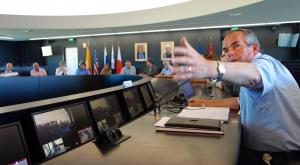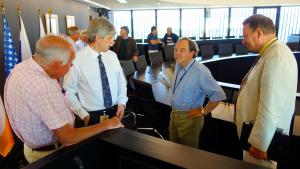The fellowship of the Plasma Ring
This anecdote and many others were shared on 24-25 June as JET and ITER personnel, connected by video link, assembled to commemorate the event that, 30 years ago, opened a new era in the history of fusion.
To Paul, and many others who now are part of the ITER team, JET provided "invaluable experience." Thirty years after its first plasma and two decades after its first burst of fusion power on 9 November 1991, "JET is the key device to resolve many of the challenges that we are facing," (Mike Walsh, head of Diagnostics); "Its input is critical for our commissioning plan," (Ken Blackler, head of Assembly & Operations); "It continues to deliver important results that provide direct input, even today, in our design decisions," (Günther Janeschitz, Engineering Officer).
The posters decorating the conference room at Culham for this two-day celebration read: "30 years of JET — Paving the way to ITER's take-off." ITER Director of Plasma Operation David Campbell, who made the trip to JET, stressed this important mission in his speech, broadcast live: "JET provides substantial training for those who will operate ITER."





